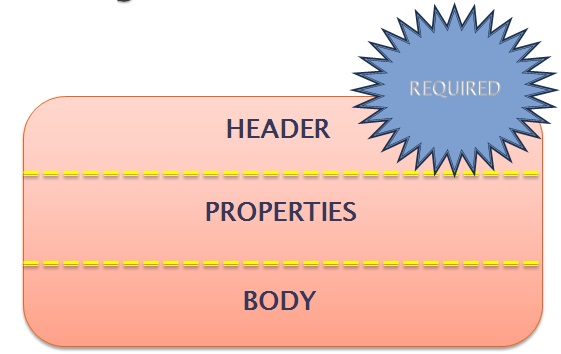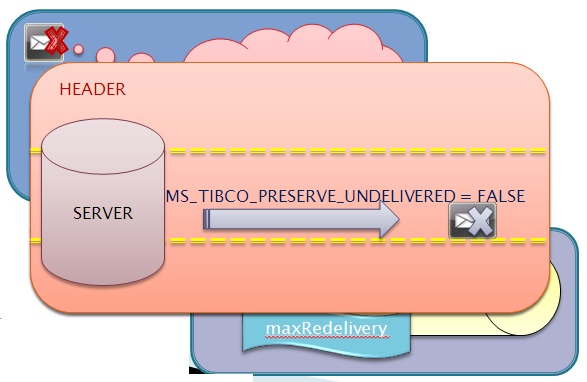These are the main parts of a EMS message.
Message Headers :
- JMSDestination
Destination to which message is sent.
- JMSDeliveryMode
Persistent, Non-persistent or Reliable.
Default is Persistent.
- JMSExpiration
Length of time the message will live before expiry.
If the server expiration property is set for a destination, it will override the JMSExpirationvalue set by the message producer.
- JMSPriority
Priority of the message. Larger numbers indicate higher priority.
- JMSMessageID
Unique identifier for a message.
- JMSTimeStamp
Timestamp of the time when the message was handed off to a provider to send. Message may actually be sent later than this timestamp.
- JMSCorrelationID
This ID can be used to link messages, such as linking a response message to a request message.
- JMSReplyTo
A destination to which a message reply should be sent.
- JMSRedelivered
If this field is set, it is possible that the message has been delivered to the client earlier, but not acknowledged at that time.
Message Properties :
- JMS_TIBCO_CM_PUBLISHER
- JMS_TIBCO_CM_SEQUENCE
- JMS_TIBCO_COMPRESS
- JMS_TIBCO_DISABLE_SENDER
- JMS_TIBCO_IMPORTED
- JMS_TIBCO_MSG_TRACE
- JMS_TIBCO_MSG_EXT
- JMS_TIBCO_SENDER
- JMS_TIBCO_SS_SENDER
- JMS_TIBCO_PRESERVE_UNDELIVERED
Message Body :
|
MESSAGE TYPE |
CONTENTS OF BODY MESSAGE |
| Message | No Body |
| Text Message | Java.lang.String |
| Map Message | Name/Value pairs |
| Bytes Message | Stream of bytes |
| Stream Message | Stream of primitive data types |
| Object Message | Serializable object |
N.B : EMS supports messages up to a maximum size of 512MB
Please Like, Share, Comment if you find the post valuable.



1 Comment